GATE 2024 - SOLVED
1) The Earth’s magnetic field originates from convection in which one of the following layers? (A) Inner core
(B) Outer core
(C) Lithosphere
(D) Asthenosphere
Solution: Outer core of the earth produces magnetic field because the molten metals present within the core are are in motion circulating in convection currents that produce electrical current. The mechanism by magnetic field is generated is known as Dynamo.
2) Which one of the following logging tools is used to measure the diameter of a borehole?
(A) Sonic
(B) Density
(C) Neutron
(D) Caliper
Solution: Density, Sonic and Neutron logs are porosity logs
Sonic log : measure interval transit time
Neutron log : measure hydrogen concentration in the formation
Density log : measure the density of the formation
SP log : measure DC potential difference
Gamma ray log : measure volume fraction of shale
3) The given figure depicts an array used in DC resistivity surveys, where the current electrodes are denoted by C1 and C2, and potential electrodes by P1 and P2. If all the electrodes are equally spaced, then the given array corresponds to which one of the following configurations?

(A) Wenner
(B) Schlumberger
(C) Dipole–Dipole
(D) Pole–Pole
Solution :
Wenner :
Current and potential electrodes are overlapping with each other
Current and potential electrodes have a common mid-point
difference between adjacent electrodes are equal
used for lateral resistivity variation (Resistivity profiling) i.e shallow subsurface profiling

Schlumberger :
Current and potential electrodes are overlapping with each other
Current and potential electrodes have a common mid-point
used for vertical resistivity variation (resistivity sounding) i.e deep subsurface profiling

Dipole-Dipole:
Distance b/w two current electrodes are equal
Current and potential electrodes are not overlapping with each other, they got separated
Used in archaeological survey

Pole-Dipole:
One current electrode is at great distance (infinite)
Electrodes are not overlapping with each other
Suitable for moderate depth investigation
Pole-Pole:
One current electrode and one potential electrode is kept at large distance
Used for rapid surveys
4) Which one of the following is an ultramafic rock?
(A) Granite
(B) Gabbro
(C) Dunite
(D) Basalt
Solution :
Granite: Intrusive acid igneous rock (Quartz+Orthoclase)
Gabbro : Intrusive basic igneous rock (Cpx+Plagioclase)
Basalt : Extrusive basic igneous rock (Cpx+Plagioclase)
Dunite : Ultramafic igneous rock (>90% olivine)
5) Gold is being produced from which one of the following mines in India?
(A) Baula
(B) Hutti
(C) Dariba
(D) Jaduguda
Solution:
Hutti : Gold mine
Baula : Chromite
Dariba : Lead and zinc
Jaduguda : Uranium
6) Which of the following hydrocarbon fields is/are located in the western offshore of India?
(A) Tapti
(B) Lakwa
(C) Ravva
(D) Panna
Solution :
Western india : Gujurat and Bombay off shore
Bombay off shore : Heera, Panna, Bassein, Neelam, Mukta, Ratna, Tapti
Gujurat : Ankleshwar, Cambay, Kolal and Nawagam
North eastern : Assam-Arakan basin
Assam : Digboi, Naharkatiya, Moran, Rudrasagar, Lakwa
7) A cylindrical sample of granite (diameter = 54.7 mm; length = 137 mm) shows a linear relationship between axial stress and axial strain under uniaxial compression up to the peak stress level at which the specimen fails. If the uniaxial compressive strength of this sample is 200 MPa and the axial strain corresponding to this peak stress is 0.005, the Young’s modulus of the sample in GPa is _______ (in integer).
Solution: Given,
Axial stress = 200 Mpa = 0.2 Gpa
Axial Strain = 0.005
We know that , Young’s modulus = Axial stress/Axial strain = 40 Gpa
8) The given figure shows the ray path of a P–wave propagating through the Earth. Choose the CORRECT P–phase corresponding to the ray path.
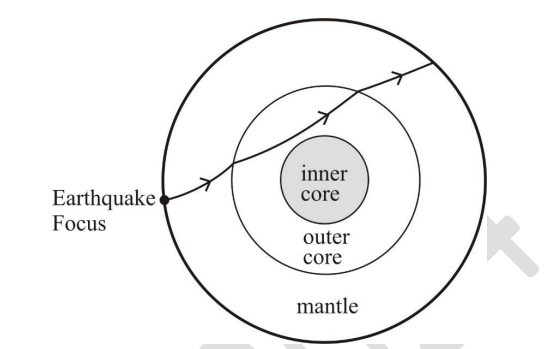
(A) PcP
(B) PKP
(C) PPP
(D) PmP
Solution:
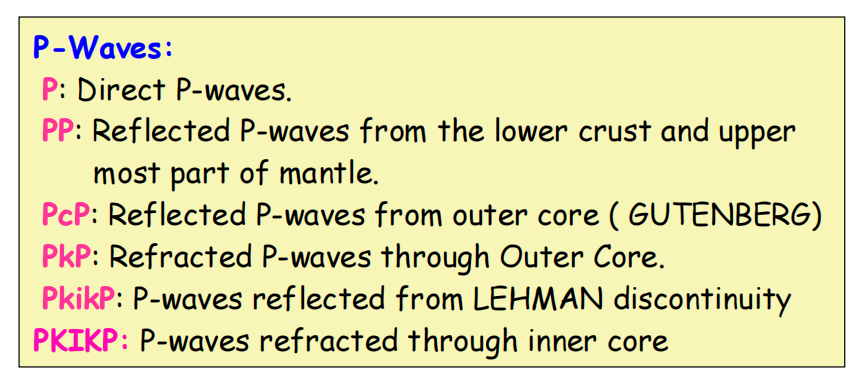
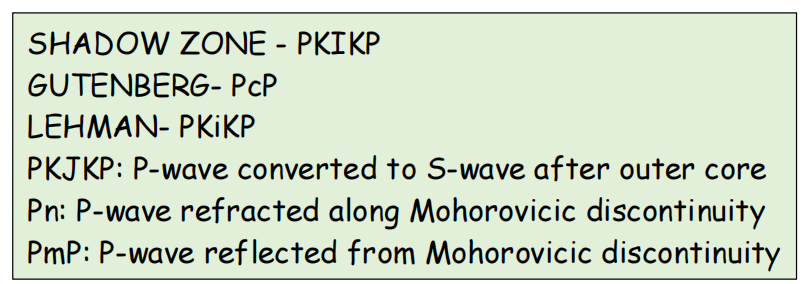
9)
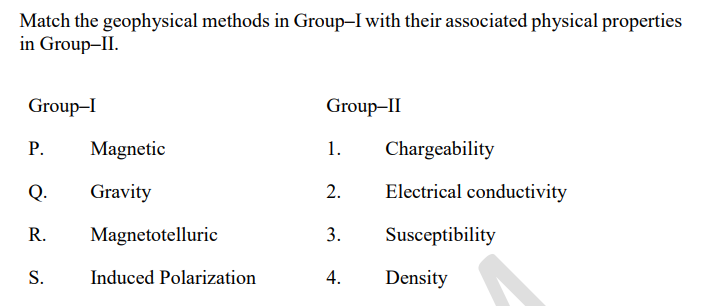
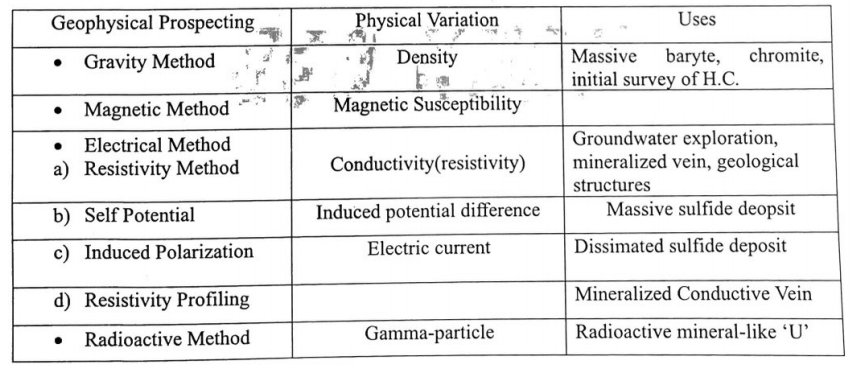
10) The number of planes of symmetry in a tetrahedron is
(A) 9
(B) 6
(C) 4
(D) 3
Solution :
Holohedral :
It posses maximum no. of symmetry
Therefore maximum no. of faces
Forms of normal class of every crystal system is holohedral form of that system
Ex: Octahedral form = 9 Mirror planes, 8 faces, Axis of symmetry =13
Hemihedral :
It posses half no. of symmetry wrt holohedral
Ex: Tetrahedral form = 6 Mirror planes and 4 faces, axis of symmetry = 7

11) Which of the following Epochs belong(s) to the Quaternary Period?
(A) Holocene
(B) Pleistocene
(C) Pliocene
(D) Miocene
Solution: Miocene and Pliocene belongs to Neogene of Tertiary period

12) Which one or more of the following minerals shows O:Si ratio of 4:1 in its silicate structure?
(A) Olivine
(B) Quartz
(C) Diopside
(D) Albite
Solution:
Quartz : Tectosilicates (Si:O=1:2)
Diopside : Single chain Inosilicates (Si:O=1:3)
Albite : Tectosilicates
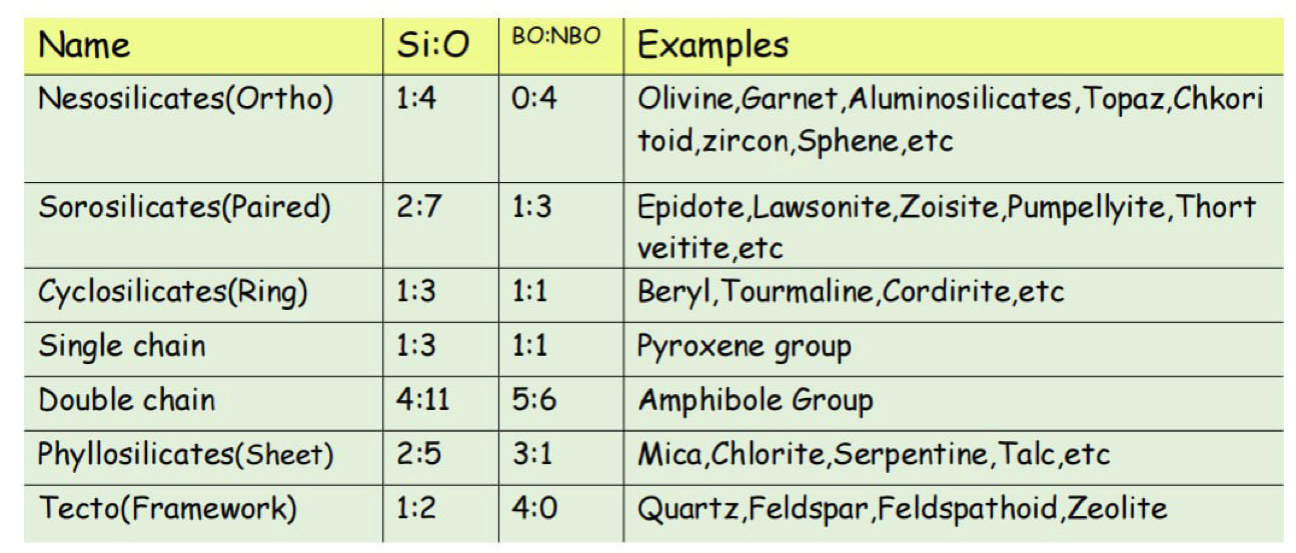
13) Which of the following rock structures is/are fold(s)?
(A) Antiform
(B) Horst
(C) Syncline
(D) Synform
Solution: All are folds except Horst
Horst : Upthrown block or raised portion of Normal fault in which fault dips away from each other
Graben : Downthrown block or raised portion of Normal fault in which fault dips towards each other
14) Assume heat producing elements are uniformly distributed within a 16 km thick
layer in the crust in a heat flow province. Given that the surface heat flow and
reduced heat flow are 54 mW/m2 and 22 mW/m2 , respectively, the radiogenic heat
production in the given crustal layer in μW/m3 is ___________ (in integer).
Ans : Radiogenic heat flow = (Surface heat flow - reduced heat flow) / thickness
= 2
15) A confined aquifer with a uniform saturated thickness of 10 m has hydraulic conductivity of 10−2 cm/s. Considering a steady flow, the transmissivity of the aquifer in m2 /day is _________________ (rounded off to one decimal place).
Ans : Transmissivity = kb
= 8.64 m/day * 10 m
= 86.4 m2/day
Comments
Post a Comment